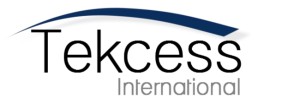It seems that it was just yesterday that the pressure was on to get product development under control. New product introductions were often late and the quality was inconsistent.
“We need a cross-functional phase-gate process for defining and developing new products!” management told you.
So you put one in place.
But now whenever your team presents program reviews to that same management team, they seem impatient and frustrated. You’ve caught sidebar conversations calling your process too bureaucratic. You’ve even heard the CEO wonder aloud if phase gate should be scrapped altogether.
What now?
Give Them What They Want
Your CEO’s foot is tapping impatiently during your program reviews because the information he desperately needs is hidden somewhere in a slide deck filled with phase gate checklists, process audit results, and compliance matrices.
As a program or product manager, all of that information is critical for you to do your job. Not so for the CEO. Your CEO wants to be sure that there’s a process in place to create high-quality new products quickly, but he doesn’t need to be dragged through the minutia of that process.
Instead, make sure your program reviews focus on the four things management needs to know about your program to do their job. They are:
- Status vs. Schedule
- Status vs. Success Criteria (usually product performance and cost targets)
- Status vs. Budget
- Top Issues and Actions
If you feel the need to assure management that you’re employing phase gate discipline, you can also toss in a slide that includes “Status vs. Phase Gate Deliverables.”
With the information listed above, management can make commitments to the investment community and the board, assess the impact on the business plan, and identify opportunities to improve performance or reduce risk.
It’s a Toolbox, Not a Script
No two programs are exactly alike. Timing, scope, risks, and priorities vary widely from program to program. If you really want to try your management’s patience, go ahead and treat your phase-gate process as one-size-fits-all.
The best practitioners use the phase-gate process as a toolbox, not a hardcoded script. They assess the needs of their particular program and then determine how to use the phase-gate process to achieve the program’s objectives. When it comes to phase-gate deliverables this may mean:
- Reordering
- Skipping
- Adding
- Truncating
- Expanding
A good phase-gate process doesn’t robotically require that you do anything. It simply provides a framework and common language to describe what you will and will not do in the course of creating your new product. For example, your phase-gate process may include a prototype deliverable. But if the program is so low risk that one is not required, it’s possible that this can be skipped. As long as the program manager communicates this intent and gets consensus with management, it’s perfectly fine.
Don’t Substitute Process for Capable People
Capital equipment development programs are dynamic. Assumptions, requirements, and risks are constantly changing. Everyday decisions need to be made on resource allocation, design trade-offs, risk mitigation, and scope. This requires leadership and a team with the skills to constantly assess their environment and determine the best course of action to drive the program towards its objectives. No process in the world is a substitute for the judgment and leadership needed to drive a new product from idea to market. For that, you need high-quality, capable people.
They Don’t Really Hate Phase Gate
Management doesn’t really hate your phase-gate process. In fact, they are counting on you to have such a process in place to make sure that high-quality new products can be developed quickly.
If they are grumbling about the process, it’s probably because they feel like the program is drowning in it. If this is happening to you:
- Focus on what management needs in program reviews.
- Treat phase gate as a toolbox, not a script.
- Don’t substitute process for capable people.

